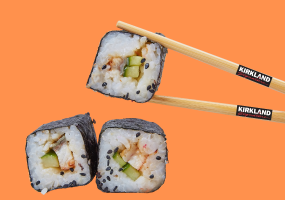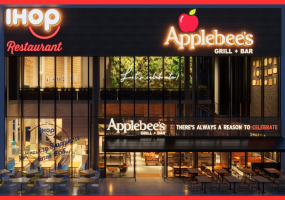How Restaurants Deal With Food Allergies
Millions of people suffer from severe allergic reactions every year, with popular restaurants being a notable hotbed of potential contamination when it comes to what your food is getting mixed up with. Nevertheless, millions of people enjoy dozens of restaurant outings each year without worrying about their allergies, largely because restaurants have established an impressive system to prevent contamination and champion customer wellbeing.
That system isn't always without fail, however, and how it actually works can be confusing to wrap one's head around. Here's how restaurants deal with food allergies, and what you need to know if you're worried about your food becoming contaminated as it cooks.
Food allergies are surging
Across the country right now, food allergy incidents are surging at a breakneck pace, with emergency room visits for children in particular having leapt up in recent years. According to data compiled by the American Academy of Allergy Asthma & Immunology, for instance, there's an increasing trend of emergency room visits or anaphylaxis, or harsh allergic reactions, taking place in the United States right now. The rates of ED visits increased by a whopping 101 percent from 2005 to 2014, indicating that more people are suffering from contaminated food right now than in recent memory.
Children in particular are very susceptible to anaphylaxis, with many young children being incapable of remembering their own food allergies or otherwise uncertain of how to go about ensuring their food is properly prepared. The highest rate of increase in ED visits to the emergency room were amongst children, and medical professionals are still struggling to come up with effective ways to educate kids about their special dietary needs.
With medical professionals finding themselves overworked and overstressed, it's up to restaurant operators to ensure that their beloved customers aren't suffering from severe allergic reactions thanks to negligence on their part. This is often easier said than done, but many restaurants have devised clever systems through which they can churn out food at a quick pace without having to worry about contamination which could prove to be harmful to customer's health.
Restaurants have plenty of good incentives to avoid allergic reactions, especially since every year it's estimated that allergens cost American businesses at least $25 million when they're sued, fined, shut down, or suffer from PR losses as a result of an allergic incident. This leads many restaurants to bolster their commercial general liability insurance, as such plans help them weather financial blows from lawsuits. With about 12 million Americans suffering from some food allergies, restaurants have to take extensive steps to prevent contamination, which begins by educating their staffers.
Training the staff and outfitting the restaurant
Restaurants deal with food allergies in two primary ways, by training their staff and by outfitting the restaurant with the equipment and infrastructure it needs to deal with allergens on a constant basis. Guides for how to efficiently train employees typically begin with educating workers on how allergens can get into the human body; many everyday foods contain a variety of harmful allergens, for instance, so staff members must be reminded that allergens can come from almost anywhere and shouldn't be viewed as some rare thing.
Servers must be instructed on how to provide accurate, detailed information regarding the allergens a restaurant may be exposing patrons to. Furthermore, they're reminded that diners also have a responsibility to notify the restaurant about their allergens; you can't be expected to keep someone safe if you don't know they're at risk, after all. Kitchen staff in particular need to receive plenty of training when it comes to handling different foods in quick succession; tools must be thoroughly washed, gloves may need to be changed, and certain employees may be designated handlers of certain ingredients which shouldn't be mixed in with others.
Using dedicated equipment and preparation areas to ensure that the risk of contamination is as low as possible is also necessary is restaurants want to avoid general liability in the event of a severe allergic reaction that threatens a customer's health. It goes without saying that menus need to prominently display ingredients which could potentially cause an allergic reaction, as customers need to know what's in the meal they're ordering if it could inadvertently kill them. According to the CDC, some 150-200 Americans are killed every year thanks to allergic reactions, so the severity of this threat can't be discounted by restaurants in an effort to save a few bucks.
Some real restaurant gurus are beginning to ban substitutions, as mixing up the contents of a meal can increase the risk of contamination, though it may irk some patients who don't have allergies. Providing special menus for dietary restrictions and isolated areas of the restaurant to eat at are also increasingly popular methods by which restaurants deal with food allergies. As this problem continues to grow, restaurants will need to come up with newer and more clever ways of tackling severe allergic reaction and the contamination problem.
* This is a contributed article and this content does not necessarily represent the views of foodworldnews.com









